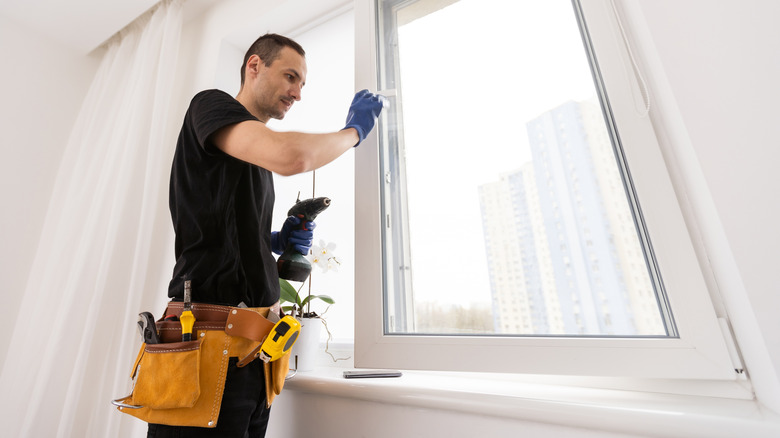The Best Temperature To Set Your Thermostat To Keep You Warm Without Running Up Electric Bills
It can be tempting to turn your thermostat up to keep your house toasty during the winter months, but if you do, you run the risk of increasing your electricity bills. If you're conscious about heating costs, installing a smart thermostat can be a great way to monitor and adjust your heating usage. The best smart thermostats will not only let you keep tabs on your property's ambient temperature while you're at home but will also let you adjust the temperature remotely using a smartphone app. However, even homeowners who don't have a smart thermostat can still potentially save money by being cautious with their heating system usage during the colder season.
Simply being stricter with the temperature that you set your thermostat to can also make a noticeable impact on your electricity bills. According to the U.S. Department of Energy, it's possible to save up to 10% on your bills every year by turning down the thermostat by 7°-10°F for eight hours during the day. If no-one is at home during your working hours, turning the thermostat down before you leave is a particularly easy way to make a difference.
When you return home, the department suggests setting your thermostat to between 68°F and 70°F in the winter months for the best compromise between comfort and electricity savings. If you're looking to optimize your heating schedule even further, you could turn the thermostat back down to its lower temperature setting when you head to bed.
There are also other ways to save on heating bills
Anyone with a traditional manually-adjusted thermostat will have to remember to turn the temperature up and down multiple times a day to maximize their energy savings, but many modern thermostats include a programming function to automatically adjust the temperature throughout the day. Once you've programmed a routine, the thermostat should automatically reduce the temperature during your normal working hours, but you'll still be able to easily override it if you're unexpectedly at home during those hours.
Even if your house is always occupied throughout the day, being selective with which parts of the property are heated can potentially save money. For example, if you have a large house with a home office, investing in an office heating gadget can be a more cost-effective way to stay warm without needing to heat the entire property during the work day.
Installing solar panels to produce electricity is another option for homeowners, although it requires a significant amount of initial capital. If you're not sold on solar, other ways to cut your heating bills include investing in additional insulation, installing energy-efficient windows, and checking seals around windows and doors to ensure there are no cracks.

